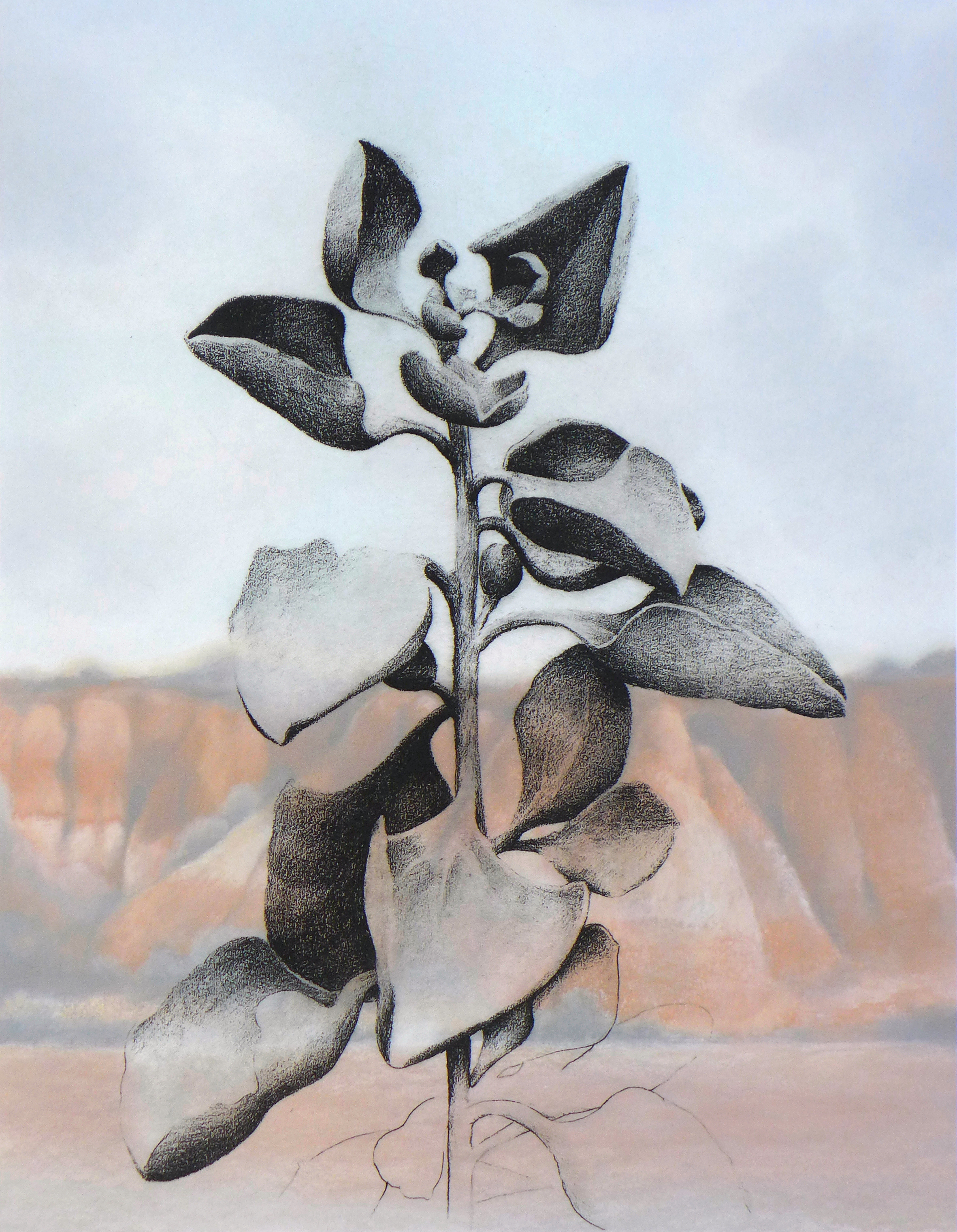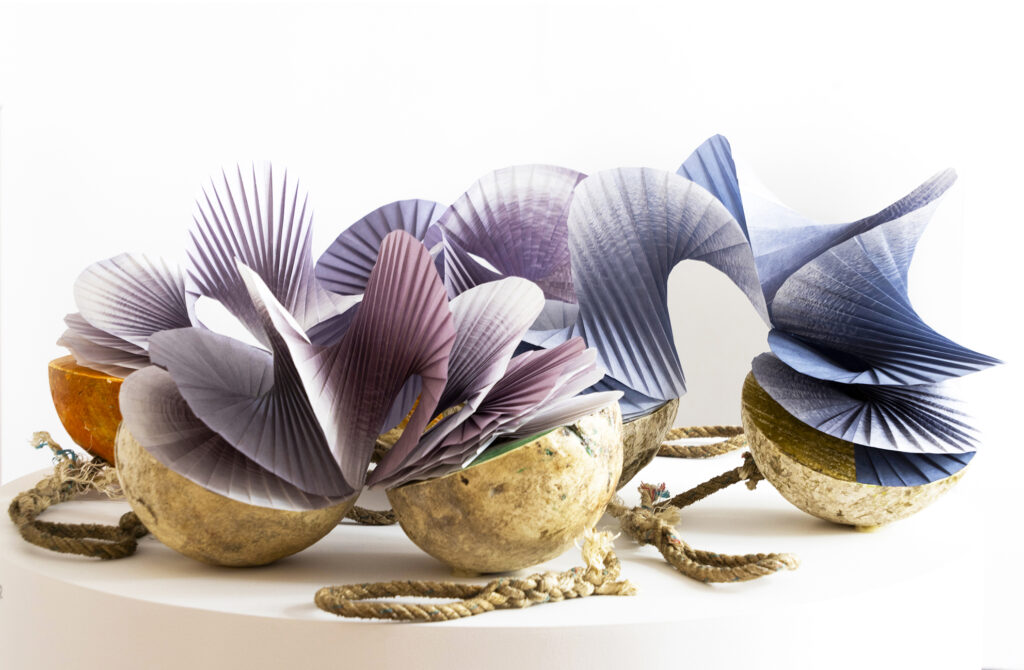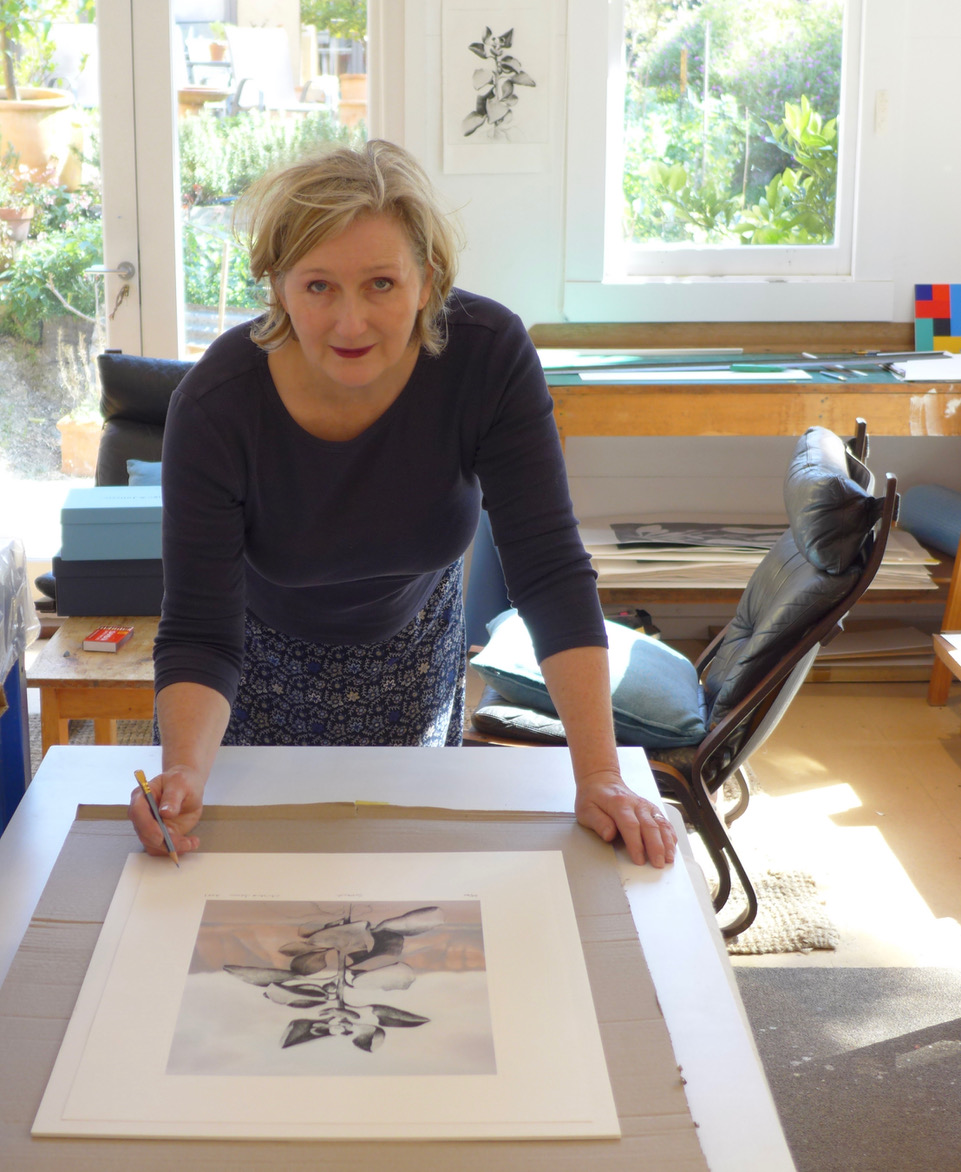
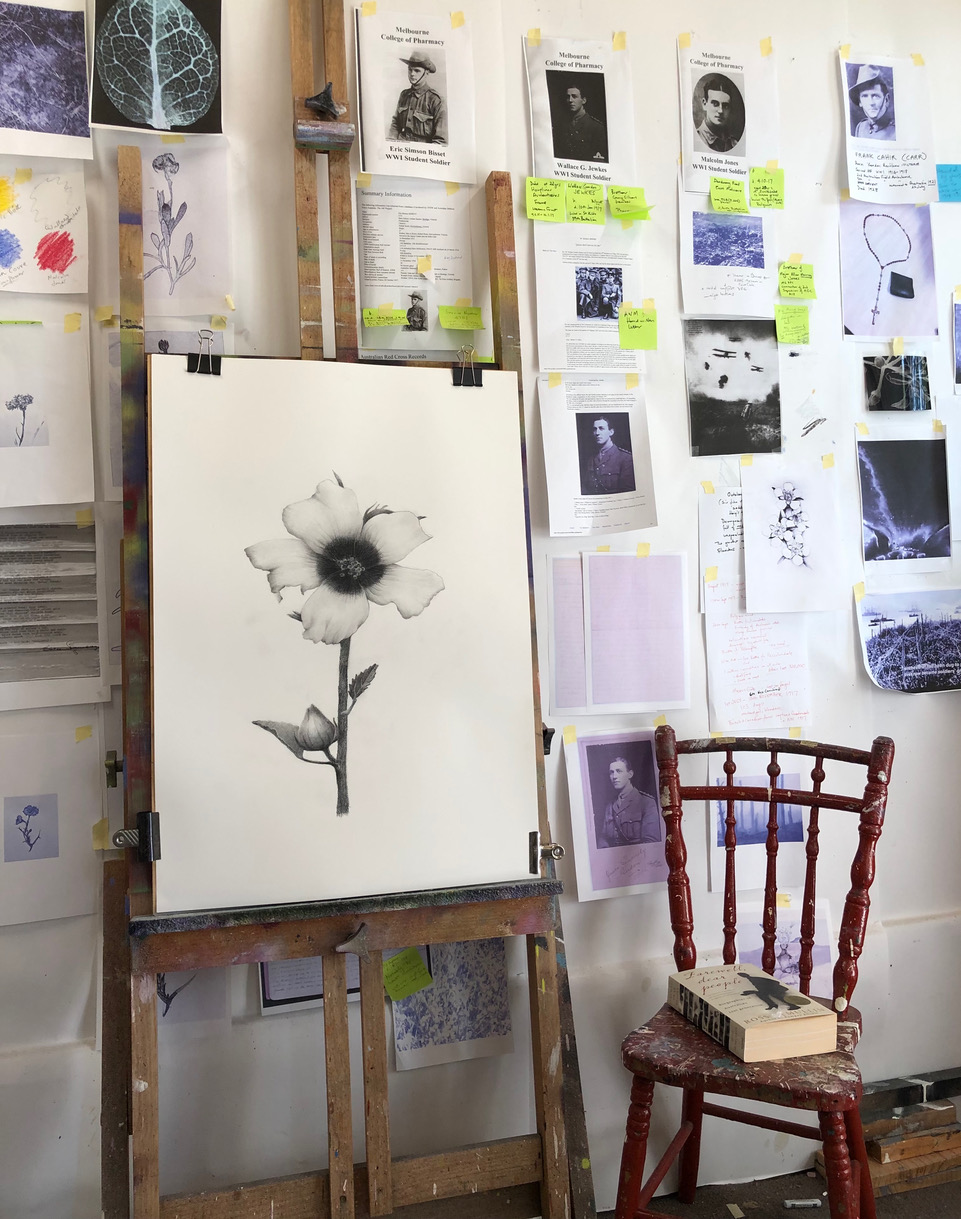
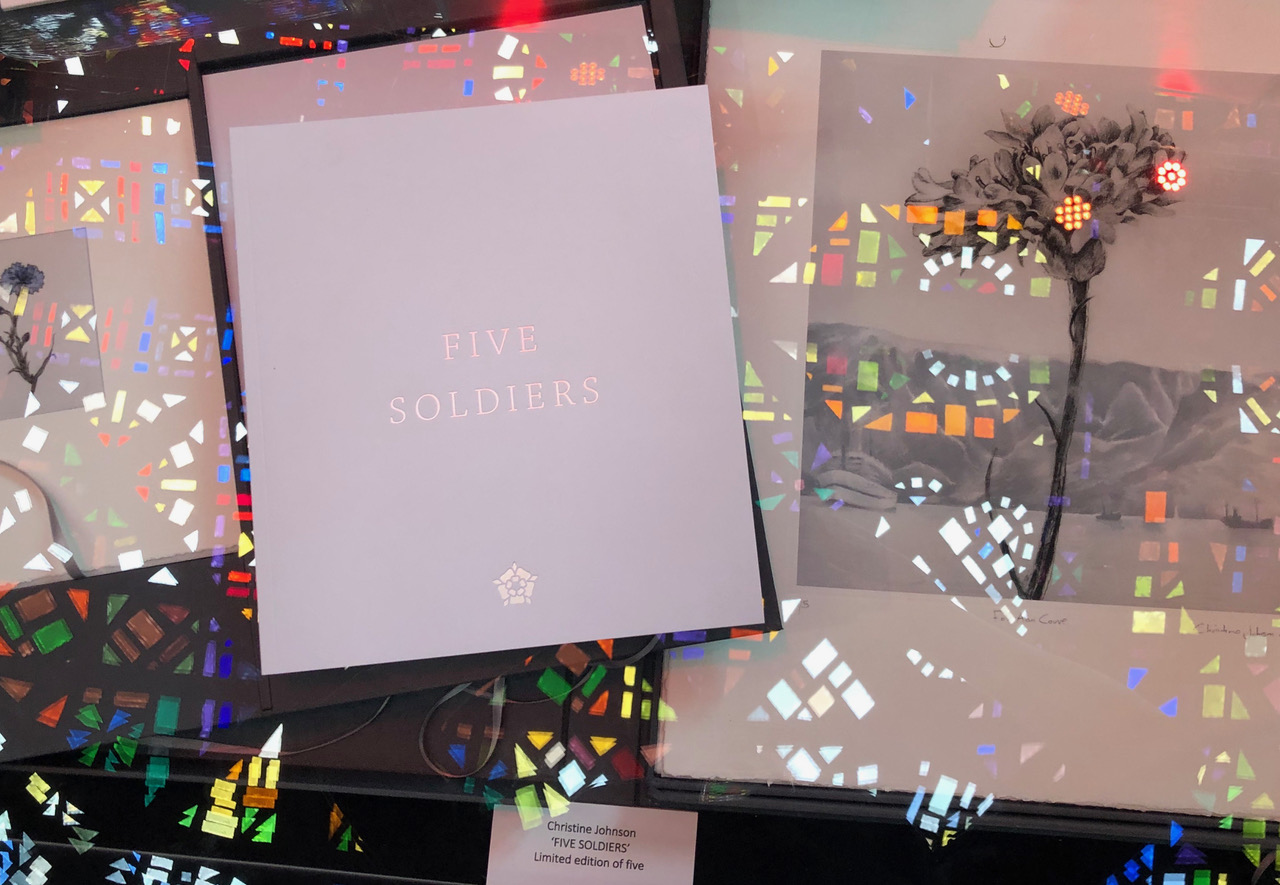
Main image:
Christine Johnson
Born 1959, Vic. Lives Vic.
Saltbush
Solar-plate engraving and archival
pigment print; images created from
drawings by the artist
Edition size: 30
Image size: 34 x 27 cm
Paper size: 54 x 41 cm
Saltbush (Atriplex nummularia Lindl.) is a
resilient survivor and defining feature of
the semi-arid desert regions of Australia
including the Mallee and areas affected
by irrigation salinity near the Murray
River. This image is part of a series that
investigates the botanical legacy of Mallee
botanist, Eileen Ramsay, whose pioneering
work documented the plants of the region,
the traditional lands of the Latji Latji,
Ngintait, Nyeri Nyeri and Wergaia peoples.
CHRISTINE JOHNSON:
My new studio was completed just over a year ago and is the fulfilment of a life-long dream to have a dedicated workspace. It is a lovely, spacious, high-roofed, light-filled building, under the shade of a venerable gum tree, with views across our bush garden. The studio is constructed of materials salvaged from the dilapidated shed that occupied the site, with recycled windows from demolition sites. It was built by local craftsmen, who are artists themselves. The studio complements our mud-brick house with its honest simplicity and natural charm. Our place is one of Alistair Knox’s first mudbrick buildings, and has a legacy of creative and unconventional occupants.
I do my printmaking at Baldessin Studio, in St Andrews – an easy half-hour drive through the Yarra Valley from here. Baldessin, too, has a celebrated history, and it is always a special and inspiring experience to work there.
All my current and recent work revolves around the life of one person: the pioneering Mallee botanist, Eileen Ramsay (1887-1961). I first came across Eileen’s botanical collection a few years ago in Mildura when my exhibition Voyages Botanical was at the Mildura Arts Centre.
Ever since, I have been captivated by the Mallee and its semi-arid desert vegetation. Just as intriguing to me is the rich history of the region and its community.
I am curious about the links forged between botany, art, and science; how in creating art, we can further explore those deeply human questions about environment, history, and our own sense of belonging. Such questions can be answered only by contemplating beauty and healing through nature.
In the Mallee, a new generation of naturalists has taken up Eileen Ramsay’s cause to help preserve the precious environment. There is a natural continuity between this contemporary group of plant enthusiasts and Eileen Ramsay and her cohort of pioneering field naturalists, who were instrumental in the establishment of the Hattah-Kulkyne National Park. As part of this process, Eileen’s collection (now in the National Herbarium of Victoria) is being used as a reference for the preservation of remnant vegetation and for revegetation.
Eileen’s contribution to botany was recently celebrated at Mildura Arts Centre in The Mallee on The Map, an exhibition created by Alison Vaughan, Collections Manager at the National Herbarium of Victoria. As part of this tribute to Eileen, I created with sound artist Angus Craig an installation work, Soundscape and Landscape. This work, inspired by Eileen’s poem, The Troopships of Anzac, was in the adjacent Rio Vista House.
Eileen’s personal story is just as fascinating as her botanising. It is also far more tragic. In 1915, both of Eileen’s brothers were killed at Gallipoli in the first few days of the campaign. In 2019, Monash University commemorated the memories of five student pharmacists, who died as a result of World War I. One of them was Eileen’s brother Alan Couve. As part of the Monash project, Five Soldiers, I was commissioned by the faculty of Pharmacy and Pharmaceutical Sciences to produce artworks for the families of the young men who fell more than a century before. Thus, these descendants, whose own lives were fractured by the past, were given the opportunity to engage with their own memories and experiences. For me, it was an honour to be involved. Indeed, this profound experience has altered my sense of purpose as an artist.
I am proud that one of my prints from Five Soldiers, For Frank Cahir, is included in the forthcoming Geelong Acquisitive Print Award. There is a link to the documentary below.
Five Soldiers Remembrance Documentary
My interest in Eileen Ramsay continues to bear creative fruit. Over the last year I have been working with Hassell Studio(architects) creating plans for a new laneway on the site of the old Couve pharmacy in Dandenong. We are creating public artworks in perforated metal to celebrate Eileen’s botanical legacy and to honour the history of the site.
As for future projects, while I’ve learned to work in a range of mediums over the last few years, it’s time to get the paints out again and explore new vistas in painting. I hope to create an exhibition that is a meditation on the life of Eileen Ramsay – something that draws the threads of her narrative together with my own creative pre-occupations.
—
Join the PCA and become a member. You’ll get the fine-art quarterly print magazine Imprint, free promotion of your exhibitions, discounts on art materials and a range of other exclusive benefits.

